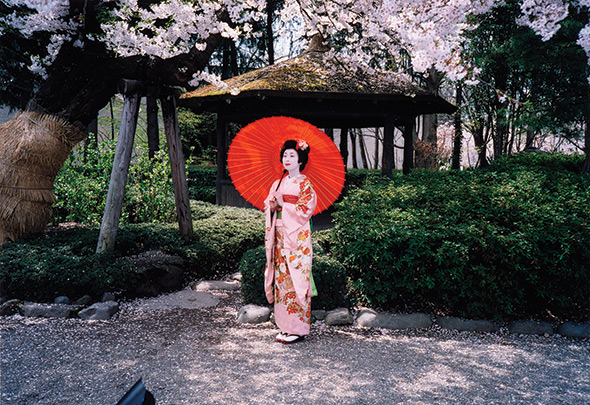
Text by Douglas Hargrave
Japan is known for its distinct seasons: lush, humid summers, drastically beautiful autumn, and cold, snowy winters. And when springtime arrives, the defining seasonal aspect in Japan is the cherry blossoms. Hanami, or blossom viewing, is a tradition in Japan that dates back over 1,200 years to the Nara period when the practice of appreciating flowers was adopted from the influential Chinese. Traditionally limited to the elite class of the Imperial Court, the popularity of hanami parties quickly spread to the common people. Cherry blossoms, or sakura, are almost always the flowers in question, although the earlier blooming and delicately beautiful plum blossoms are also praised. Cherry or plum groves are carefully maintained to attract people from afar, but sometimes the small clusters of trees growing around old shrines, parks and other public places are the most enjoyable to visit.
Despite the rapid urbanization and modernization of Japan, hanami has remained relatively uncommercialized and unchanged throughout the centuries. A blossom viewing event 300 years ago would not differ much from one held today. Family, friends, coworkers or couples gather in a public area surrounded by dozens of well-tended trees in full bloom. Sitting on mats or on the grass, they talk, share food brought from home or bought locally, admire the blossoms, and usually drink plenty of sake, sometimes well into the evening. Hanami at night is known as yozakura, and the pale pink sakura illuminated by lantern light is unforgettable.
One of the most striking features of the spring blossoms in Japan is their short duration. Once in bloom, sakura last only about a week, making it even more important to schedule a hanami party ahead of time. Newspapers report daily on the status of the blossoms, giving the percentages of flowers in full bloom in various locations. But as soon as the flowers have reached their peak, and before one has the chance to take them for granted, the small petals begin to float gently down like light pink snow in one of the most enduring and iconic images of Japan. Before long, grass, sidewalks and ponds are littered with little pink spots, the trees barren except for the emerging spring leaves. The transient, ungraspable nature of the cherry blossom strikes at the Buddhist core of Japanese culture. Life, youth and beauty are taken from us so quickly and irrevocably, yet we pass our days in a flurry of appointments, commutes and telephone calls. Sometimes it’s good to just sit back and enjoy the flowers.

